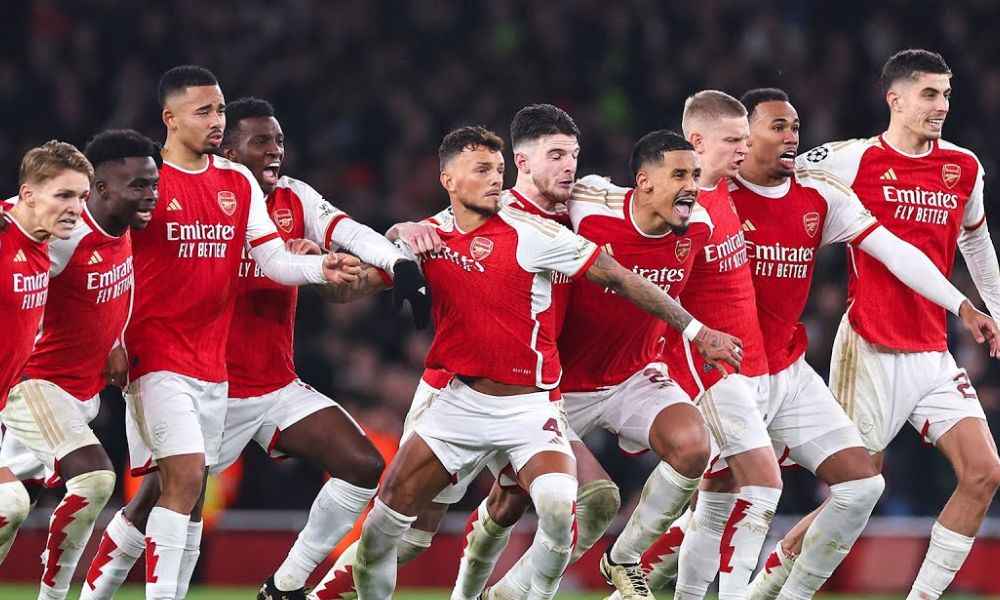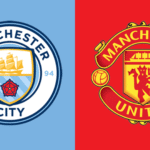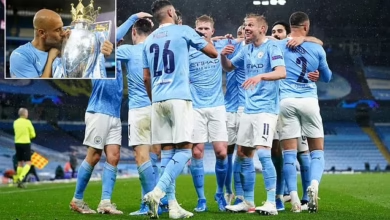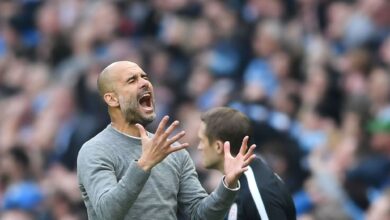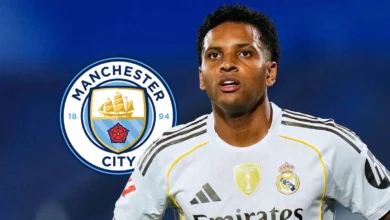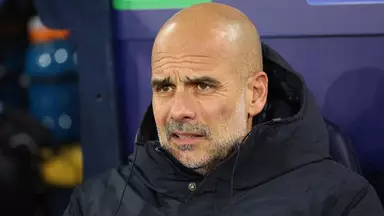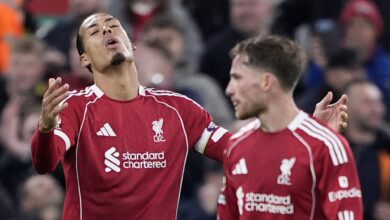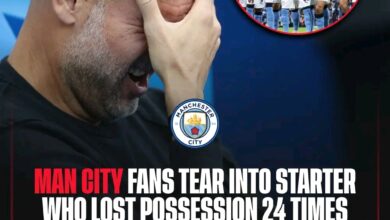Man City should now let Barcelona sign their £21m target, they don’t need him at all
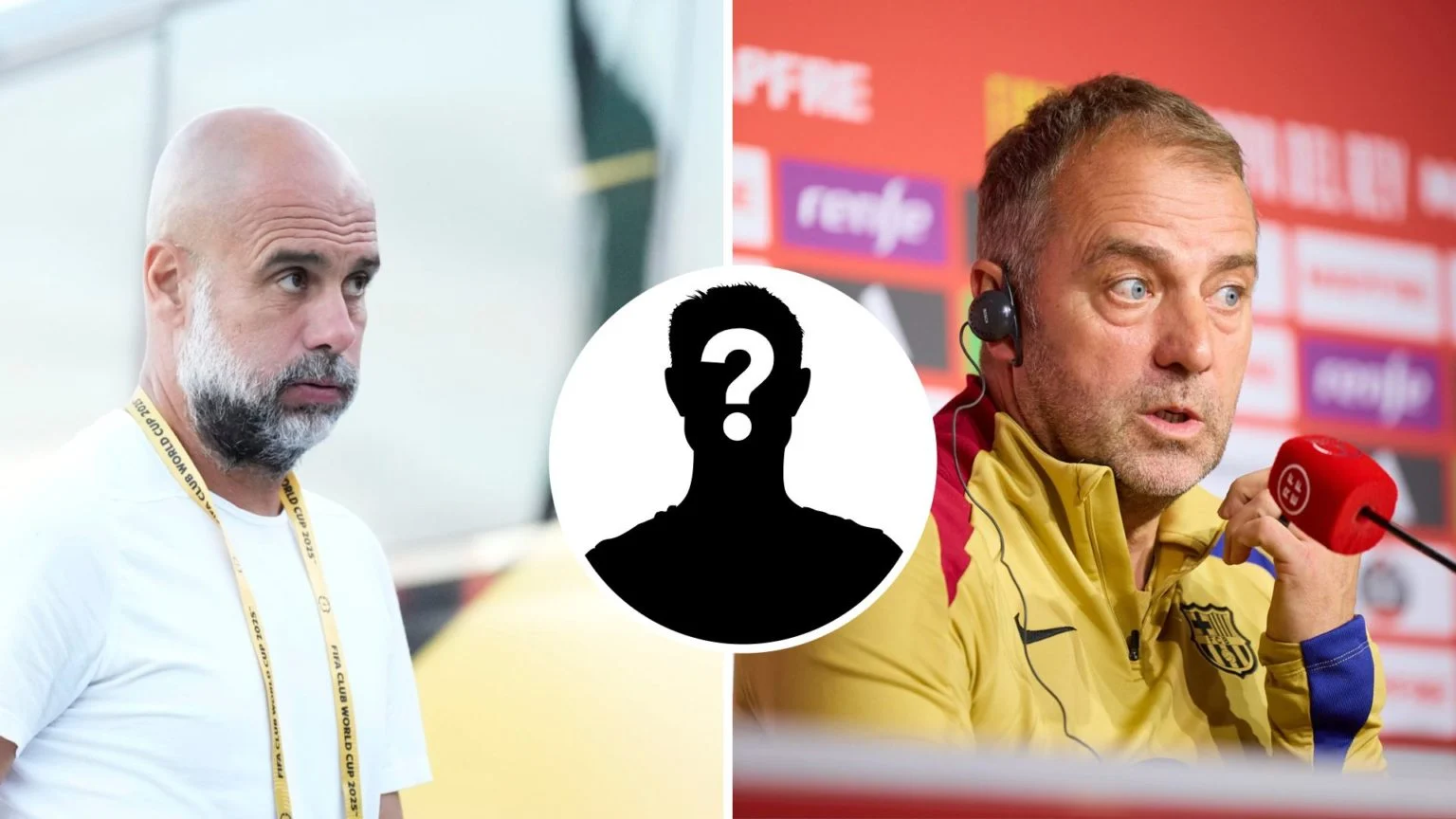
As the summer transfer window reaches its crescendo, Manchester City finds itself at a familiar crossroads where ambition meets pragmatic squad building. The reigning Premier League champions, under the meticulous guidance of Pep Guardiola, are once again navigating the complex web of player acquisitions that will define their trajectory for the upcoming season. With their characteristic blend of tactical sophistication and financial muscle, City’s transfer strategy reflects not just immediate needs but long-term architectural planning for sustained success.
The 2025 summer window has presented City with several intriguing opportunities, none more debated than their pursuit of Inter Milan’s Denzel Dumfries and the emerging interest in Ajax’s promising defender Jorrel Hato. These potential acquisitions represent contrasting philosophies in player recruitment – one focused on immediate impact and proven quality, the other on future potential and tactical versatility. As City weighs these options, the decisions made will reveal much about their strategic vision under the stewardship of sporting director Hugo Viana.
The Dumfries Dilemma: Why City Should Step Aside
Barcelona’s Shared DNA with Manchester City
The relationship between Manchester City and Barcelona transcends mere professional courtesy, rooted in the shared legacy of Pep Guardiola, who remains the most transformative figure in both clubs’ modern history. This connection has facilitated numerous player exchanges over recent years, creating a pipeline of talent that flows between the Etihad Stadium and Camp Nou. The returns of Ilkay Gundogan to Manchester, the movements of Eric Garcia and Joao Cancelo, and various other transactions have established a precedent of mutual respect and strategic cooperation.
In this context, the pursuit of Denzel Dumfries presents an interesting case study. The Dutch right-back, available for his £21.5 million release clause until mid-July, represents excellent value in today’s inflated transfer market. His proven quality in Serie A with Inter Milan, combined with his consistent performances for the Netherlands national team, makes him an attractive proposition for any club seeking defensive reinforcement.
Technical Limitations in Guardiola’s System
However, beneath the surface appeal lies a fundamental incompatibility with Manchester City’s tactical requirements. Guardiola’s system demands specific technical attributes from full-backs that extend far beyond traditional defensive duties. The Spanish tactician requires his wide defenders to operate as auxiliary playmakers, comfortable in tight spaces, capable of intricate passing sequences, and able to contribute meaningfully to the team’s possession-based approach.
Dumfries, despite his undeniable qualities, presents a profile that doesn’t align with these requirements. His strengths lie in direct running, physicality, and attacking the space behind defensive lines – attributes that shine in counter-attacking systems but become less pronounced in possession-heavy approaches. The former PSV Eindhoven defender’s technical ability, while adequate for his previous environments, lacks the refinement required for City’s intricate positional play.
The statistical evidence supports this assessment. In 179 appearances for Inter Milan, Dumfries has registered 22 goals and 26 assists – respectable numbers that nonetheless reveal a player whose creative output doesn’t match the standards expected from City’s attacking full-backs. When compared to the likes of Joao Cancelo during his peak City years or even Kyle Walker’s assist numbers, Dumfries’ creative contribution appears insufficient for a team that generates the majority of their attacks through wide areas.
The Age Factor and Strategic Miscalculation
Perhaps most concerning is the temporal aspect of this potential acquisition. Dumfries will turn 30 next year, placing him in the category of players who have likely reached their peak performance levels. Manchester City’s recent history with aging acquisitions provides a cautionary tale – players like Gundogan and Mateo Kovacic, while bringing experience and quality, have also highlighted the risks associated with investing in players at the tail end of their careers.
The modern game’s physical demands, particularly in the Premier League, require full-backs to maintain exceptional fitness levels throughout a grueling season. Dumfries’ reliance on pace and physical attributes makes him particularly vulnerable to the natural decline that accompanies aging. For a club with City’s ambitions, investing in a player who may only have two to three years of peak performance remaining represents a strategic miscalculation.
The Livramento Alternative: Youth and Potential
Newcastle’s Gem: Tino Livramento
While City should distance themselves from the Dumfries pursuit, their interest in Newcastle United’s Tino Livramento represents a more strategic approach to squad building. At just 22 years old, Livramento embodies the profile of player that typically thrives under Guardiola’s tutelage – young, technically gifted, and possessing the physical attributes necessary to adapt to the demands of modern football.
Livramento’s journey from Southampton to Newcastle has been marked by consistent development and adaptation. His performances in the Premier League have demonstrated the kind of tactical intelligence and technical ability that translates well to City’s system. Unlike Dumfries, whose strengths are somewhat fixed, Livramento possesses the age and attitude necessary for continued improvement under Guardiola’s guidance.
The English defender’s ability to contribute in attacking phases, combined with his defensive solidity, makes him an ideal candidate for City’s system. His crossing ability, decision-making in the final third, and comfort on the ball align with the requirements of Guardiola’s tactical approach. Moreover, his experience in the Premier League eliminates concerns about adaptation to English football’s unique demands.
The Financial Reality
Newcastle’s £80 million asking price for Livramento represents a significant investment, one that reflects both the player’s potential and the current market dynamics. While this fee might appear excessive for a player yet to establish himself as world-class, it must be viewed within the context of City’s long-term planning. The investment in Livramento would provide City with a right-back solution for the next decade, amortizing the cost over a much longer period than would be possible with Dumfries.
Furthermore, the potential for Livramento to develop into a truly elite player under Guardiola’s coaching adds significant value to the investment. The Spanish manager’s track record in developing full-backs – from Dani Alves at Barcelona to the transformation of various players at City – suggests that Livramento could exceed his current valuation through improved performance and increased market value.
Defensive Vulnerabilities: The Hato Solution
City’s Defensive Concerns
Looking ahead to the 2025/2026 season, Manchester City’s defensive structure presents several areas of concern that require immediate attention. The departure of Kyle Walker to Burnley has left a significant void at right-back, while the central defensive partnership has shown signs of vulnerability. Manuel Akanji’s inconsistent form, combined with Ruben Dias’ occasional lapses, has created uncertainty at the heart of City’s defense.
The injury-prone nature of both John Stones and Nathan Ake further complicates matters, leaving City potentially short of reliable defensive options during crucial periods of the season. While Josko Gvardiol has shown promise in his limited appearances at center-back, and the young duo of Abdukodir Khusanov and Vitor Reis represent exciting prospects, neither provides the immediate reliability required for title challenges.
When compared to the defensive solidity of rivals Liverpool and Arsenal, City’s backline appears vulnerable. Liverpool’s partnership of Ibrahima Konate and Virgil van Dijk, alongside Arsenal’s William Saliba and Gabriel Magalhaes combination, presents a significant competitive disadvantage that City must address to maintain their position at the top of English football.
Jorrel Hato: The Versatile Solution
Enter Jorrel Hato, the 19-year-old Ajax defender who represents everything City should seek in a defensive acquisition. The Dutch international’s versatility alone makes him an attractive proposition – equally comfortable at center-back and left-back, with the technical ability to contribute across multiple positions. This tactical flexibility aligns perfectly with Guardiola’s preference for players who can adapt to various tactical requirements.
Hato’s statistical profile reveals a player who has already demonstrated remarkable consistency at the highest level. With 88 appearances as a center-back and 70 as a left-back, he possesses the positional intelligence and adaptability that suggests seamless integration into City’s system. His left-footed profile addresses a specific need in City’s squad, providing natural balance to their defensive structure.
The teenager’s physical attributes complement his technical abilities perfectly. His pace allows him to recover in defensive situations while contributing to City’s attacking phases through overlapping runs and positional rotations. His ball-carrying ability and technical soundness align with the passing requirements of Guardiola’s possession-based approach, suggesting he could function as an auxiliary playmaker from defensive positions.
Liverpool’s Interest and Competitive Pressure
Recent reports suggesting Liverpool’s direct interest in Hato add urgency to City’s decision-making process. The prospect of losing a target to their Premier League rivals represents more than just a missed opportunity – it potentially strengthens a direct competitor while leaving City’s defensive weaknesses unaddressed.
The endorsement of Virgil van Dijk, widely regarded as one of the finest center-backs in world football, carries significant weight in evaluating Hato’s potential. Van Dijk’s reputation for identifying defensive talent, combined with his understanding of the Premier League’s demands, makes his admiration for Hato a compelling factor in City’s assessment.
Strategic Implications and Long-term Vision
The Viana Factor
The appointment of Hugo Viana as sporting director has introduced a new dynamic to City’s transfer strategy. Viana’s reputation for swift, decisive action in the transfer market suggests that once City identifies a target, completion follows quickly. This efficiency could prove crucial in securing Hato’s signature before Liverpool or other competitors can finalize their interest.
Viana’s approach to player recruitment appears focused on identifying players who can contribute immediately while possessing the potential for long-term development. This philosophy aligns perfectly with the Hato profile – a player who could provide immediate squad depth while developing into a key first-team contributor over time.
Tactical Flexibility and Squad Depth
The acquisition of Hato would provide Guardiola with the tactical flexibility he values highly. The ability to deploy Hato as a left-back when Nathan Ake is injured, or as a center-back when squad rotation is necessary, addresses multiple squad needs with a single acquisition. This efficiency in squad building allows City to maintain their competitive edge while managing their extensive fixture list across multiple competitions.
Moreover, Hato’s presence would allow for tactical experimentation without compromising defensive stability. Guardiola’s preference for players who can adapt to different roles and responsibilities makes Hato an ideal candidate for integration into City’s tactical framework.
Financial Considerations and Market Dynamics
The current transfer market presents unique challenges and opportunities for clubs of City’s stature. The increasing inflation in player valuations, combined with Financial Fair Play regulations, requires strategic thinking in player acquisitions. Investing in young, versatile players like Hato represents efficient use of resources, providing long-term value while addressing immediate needs.
The potential for Hato to develop into a world-class defender under Guardiola’s guidance adds significant value to any investment. The appreciation in player value that typically accompanies successful development under elite coaching makes such acquisitions financially sound investments beyond their immediate tactical contributions.
Conclusion: Strategic Priorities for City’s Future
As Manchester City navigates the complexities of the current transfer window, the decisions regarding Dumfries and Hato will reveal much about their strategic vision for the future. The recommendation to step aside from the Dumfries pursuit while pursuing Hato aggressively reflects a preference for long-term thinking over short-term fixes.
The Dumfries situation presents an opportunity for City to demonstrate strategic restraint, allowing Barcelona to pursue a player who doesn’t align with their tactical requirements. This decision, while potentially disappointing to some fans eager for immediate reinforcement, reflects the kind of disciplined approach that has characterized City’s most successful transfer windows.
Conversely, the pursuit of Hato represents exactly the kind of strategic thinking that has elevated City to their current position. The investment in a young, versatile, technically gifted defender addresses multiple squad needs while providing the foundation for sustained success. The competitive element introduced by Liverpool’s interest adds urgency but shouldn’t compromise City’s strategic approach.
The broader implications of these decisions extend beyond individual player acquisitions. They reflect City’s commitment to maintaining their competitive edge through intelligent squad building rather than reactive purchasing. This approach, while requiring patience and long-term thinking, has proven successful in establishing City as a dominant force in English and European football.
As the transfer window progresses, City’s ability to execute these strategic decisions will determine their preparedness for the challenges ahead. The choice between immediate impact and long-term development, between proven quality and emerging potential, will shape not just the upcoming season but the club’s trajectory for years to come.
The summer of 2025 may well be remembered as a defining moment in City’s evolution – a time when strategic thinking and tactical awareness combined to lay the foundation for another period of sustained success. The decisions made regarding Dumfries and Hato will serve as a testament to City’s commitment to excellence and their understanding of what it takes to remain at the pinnacle of world football.
